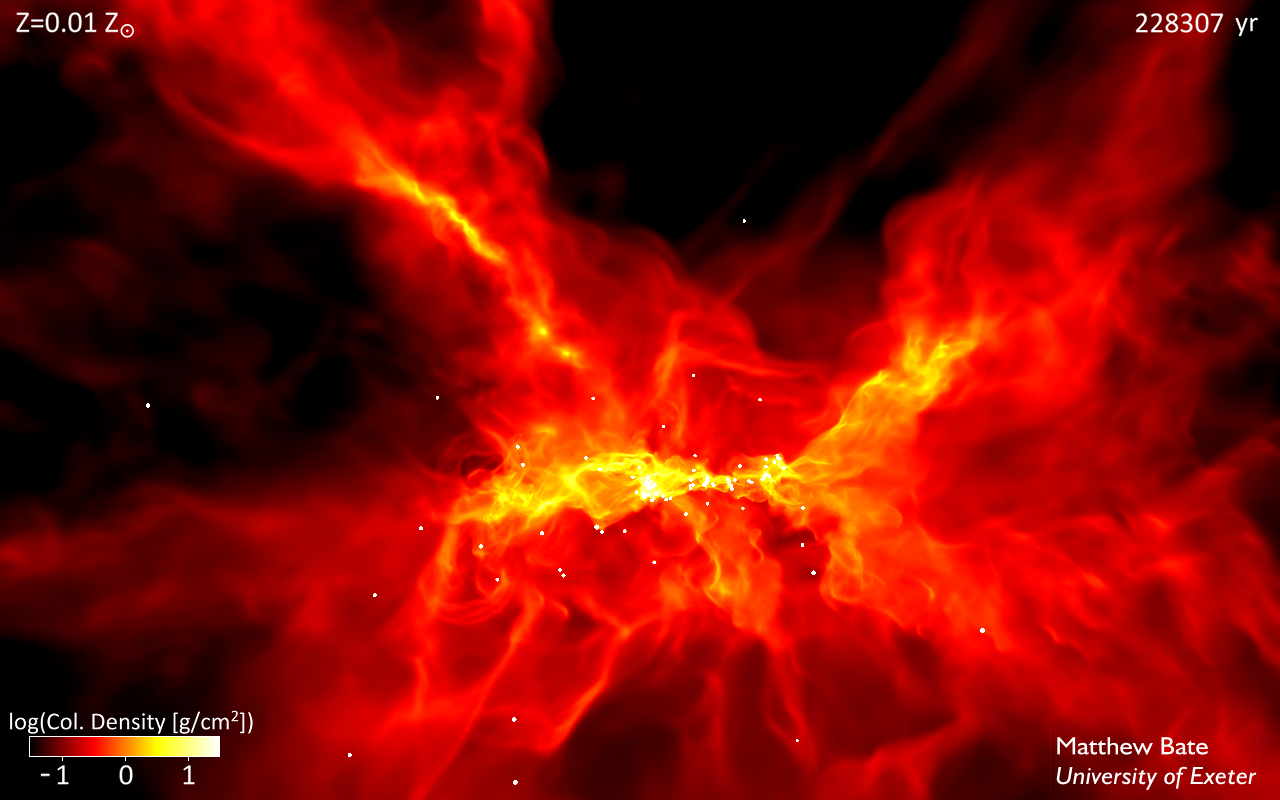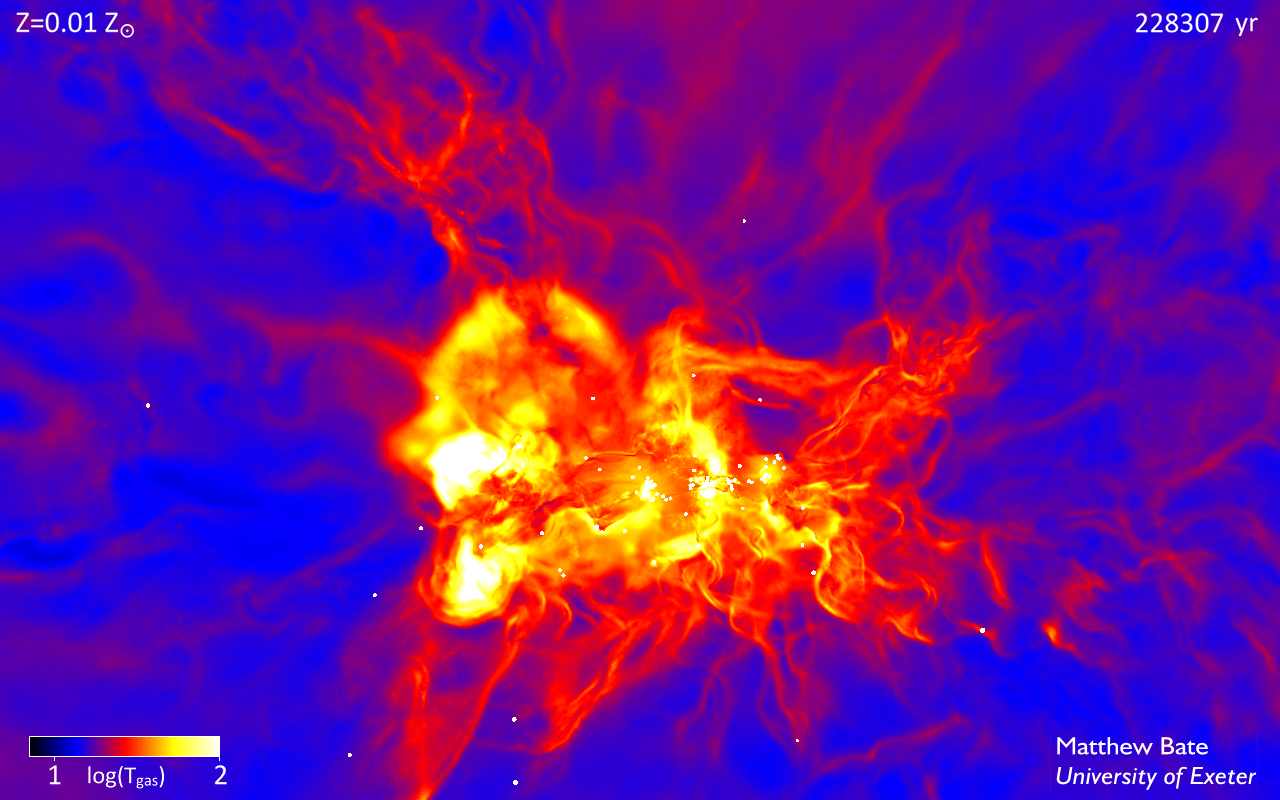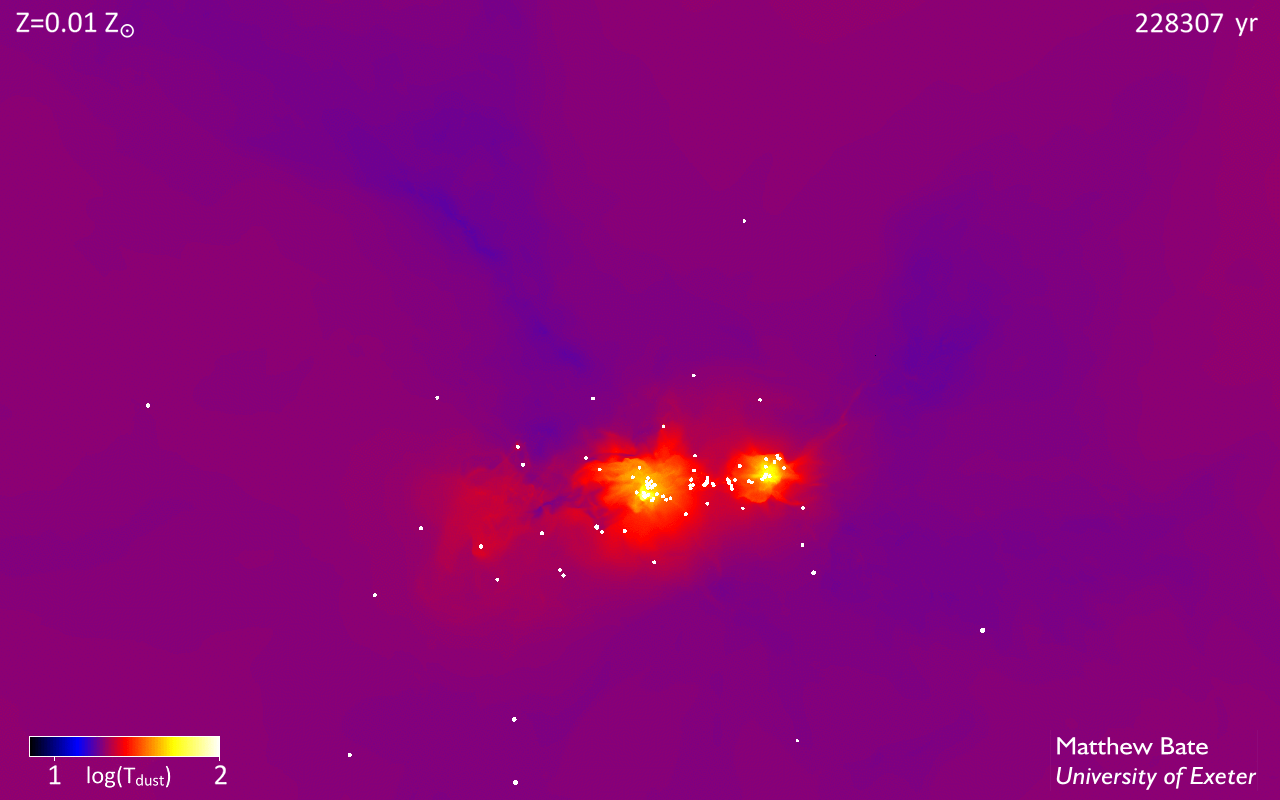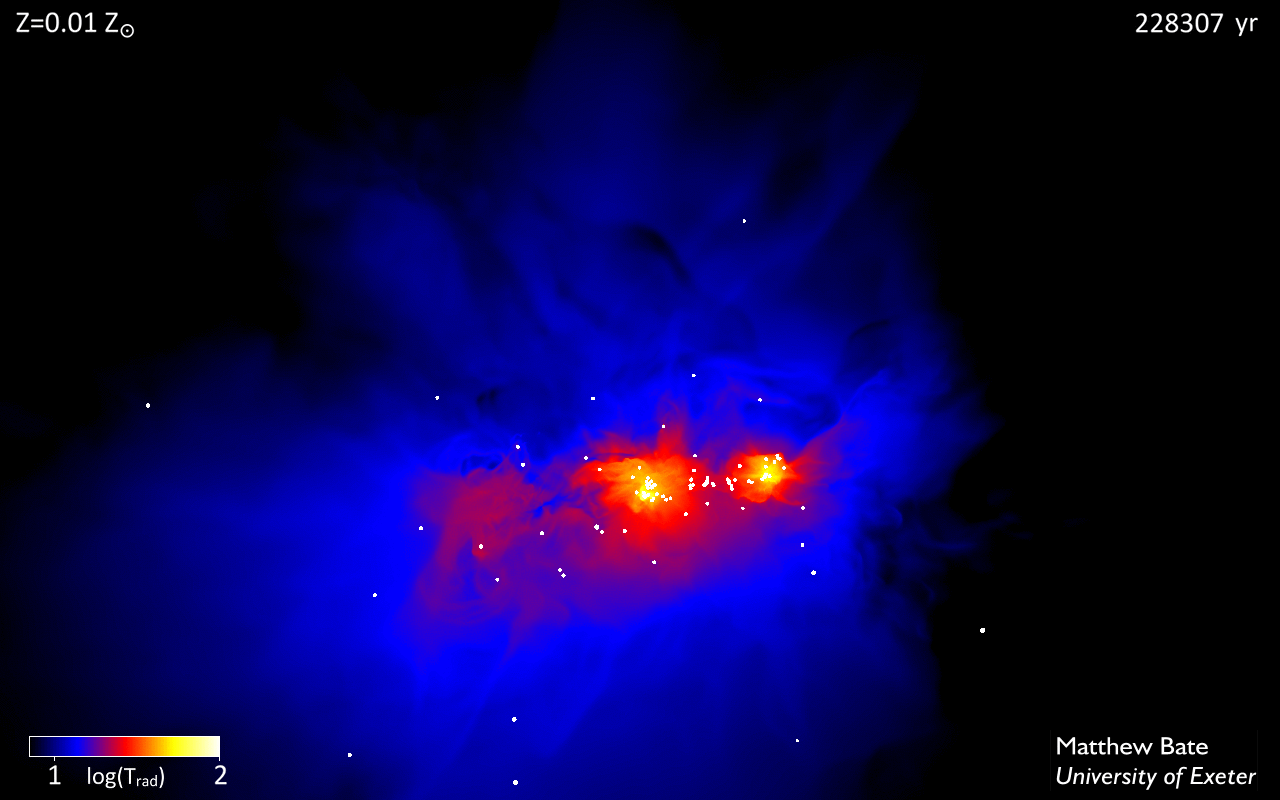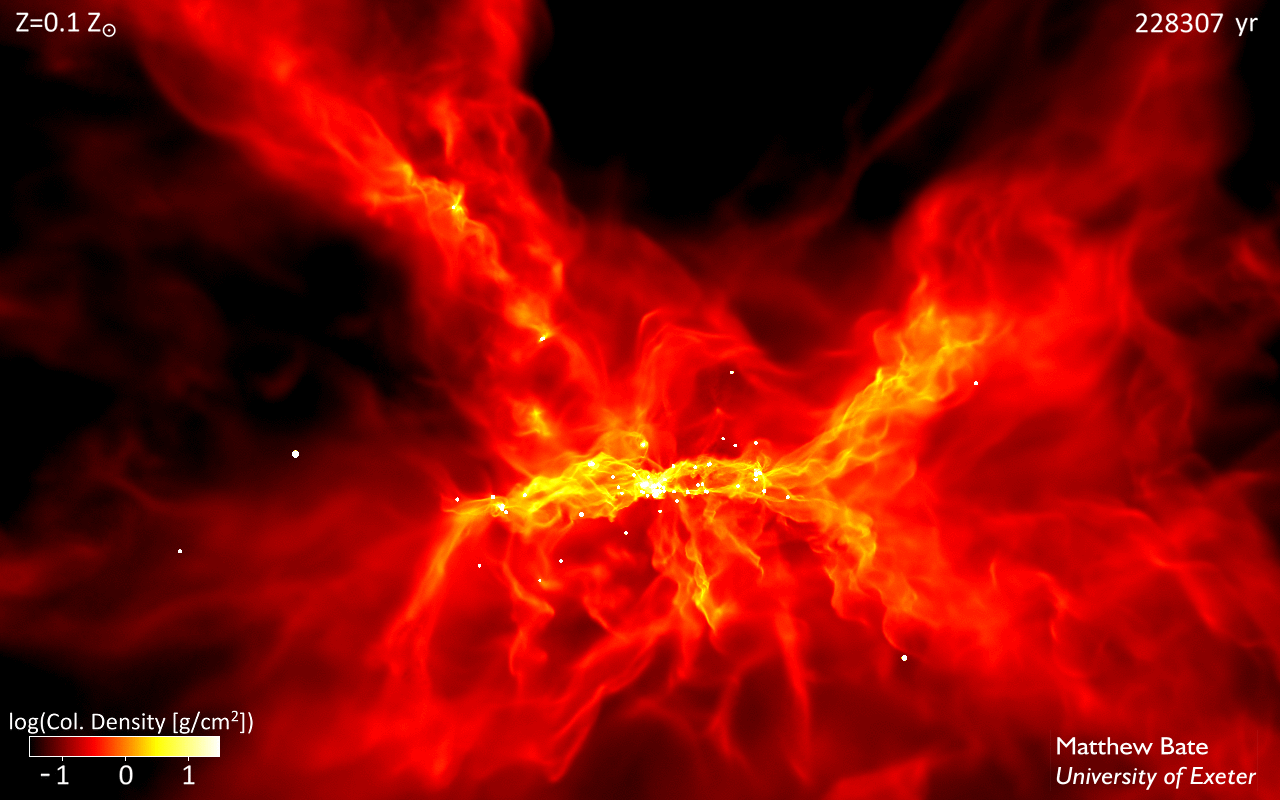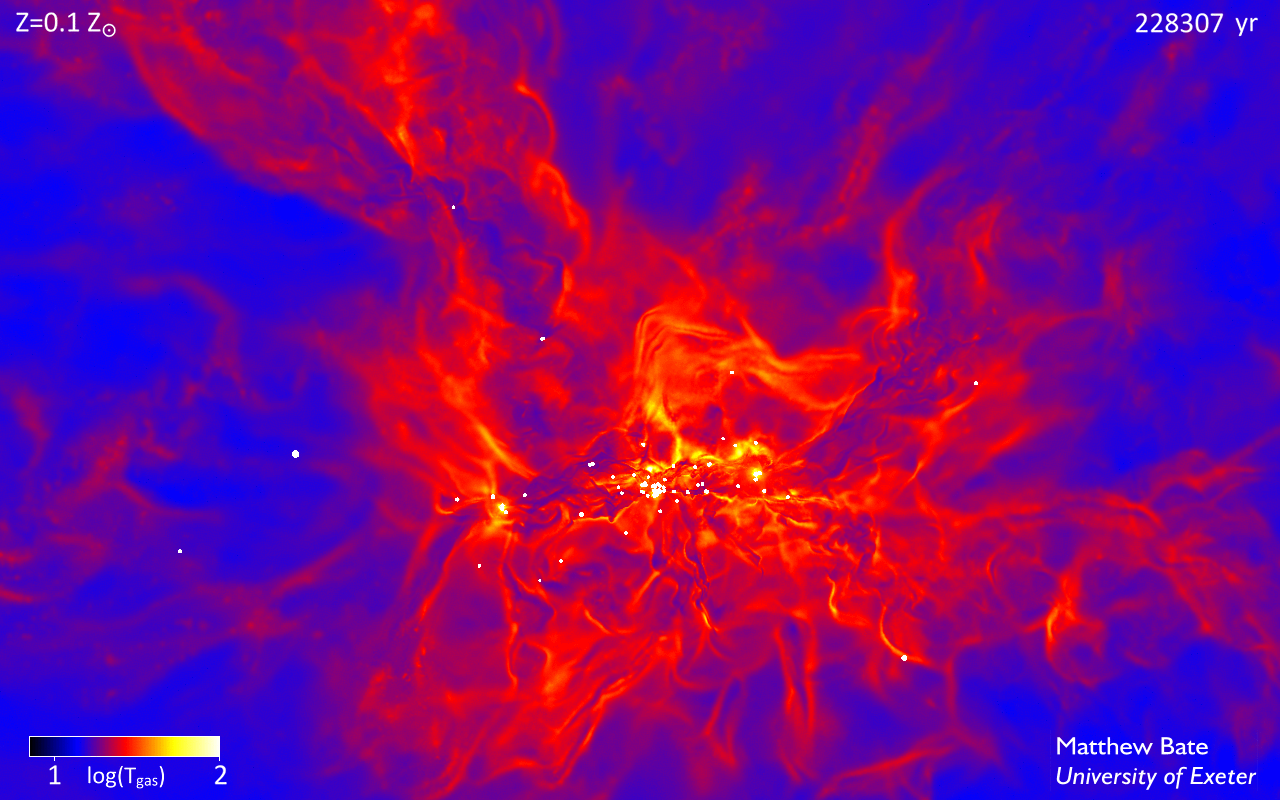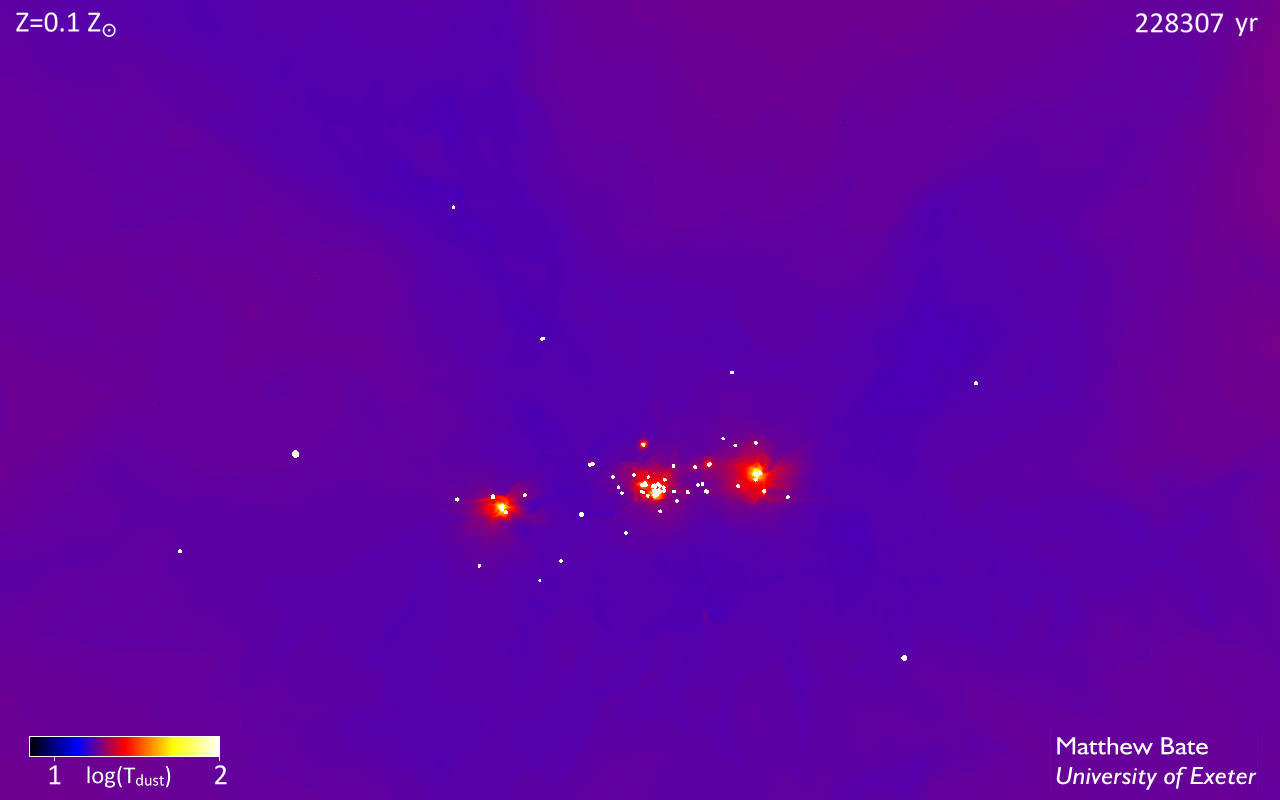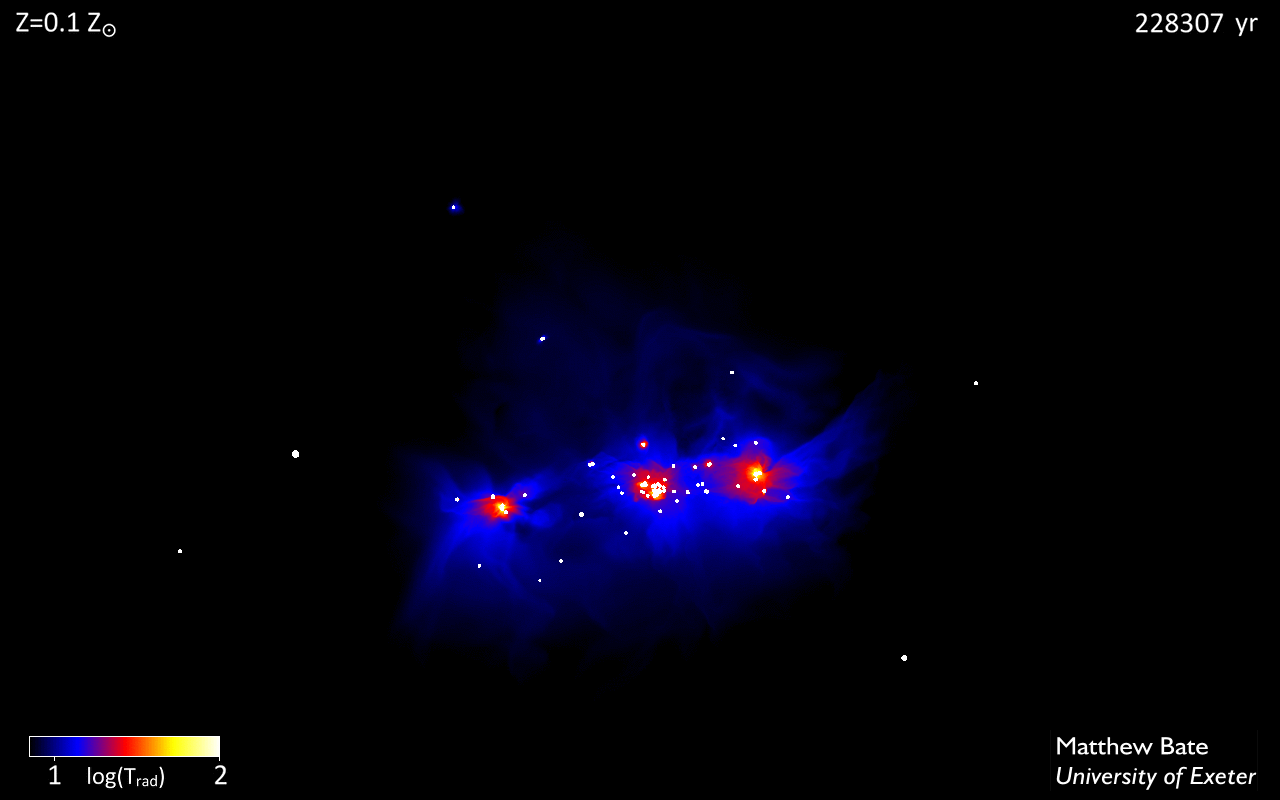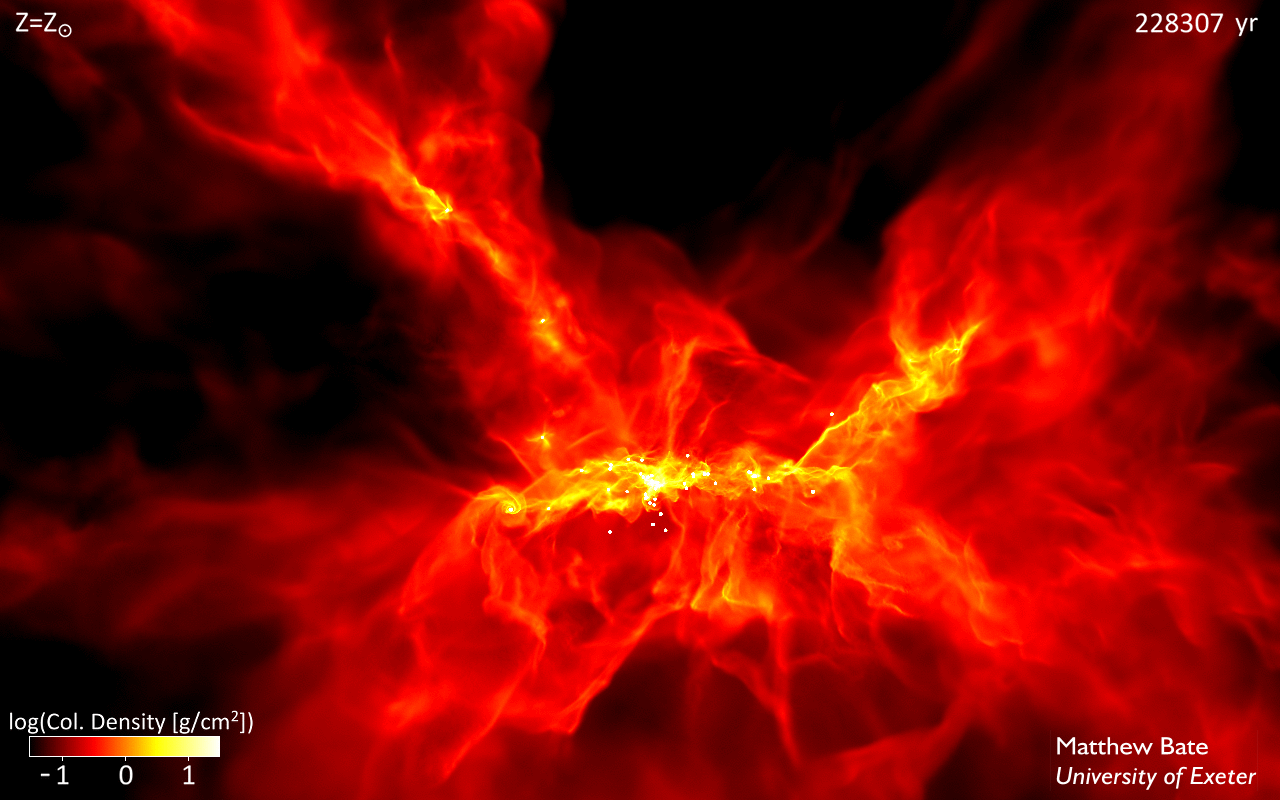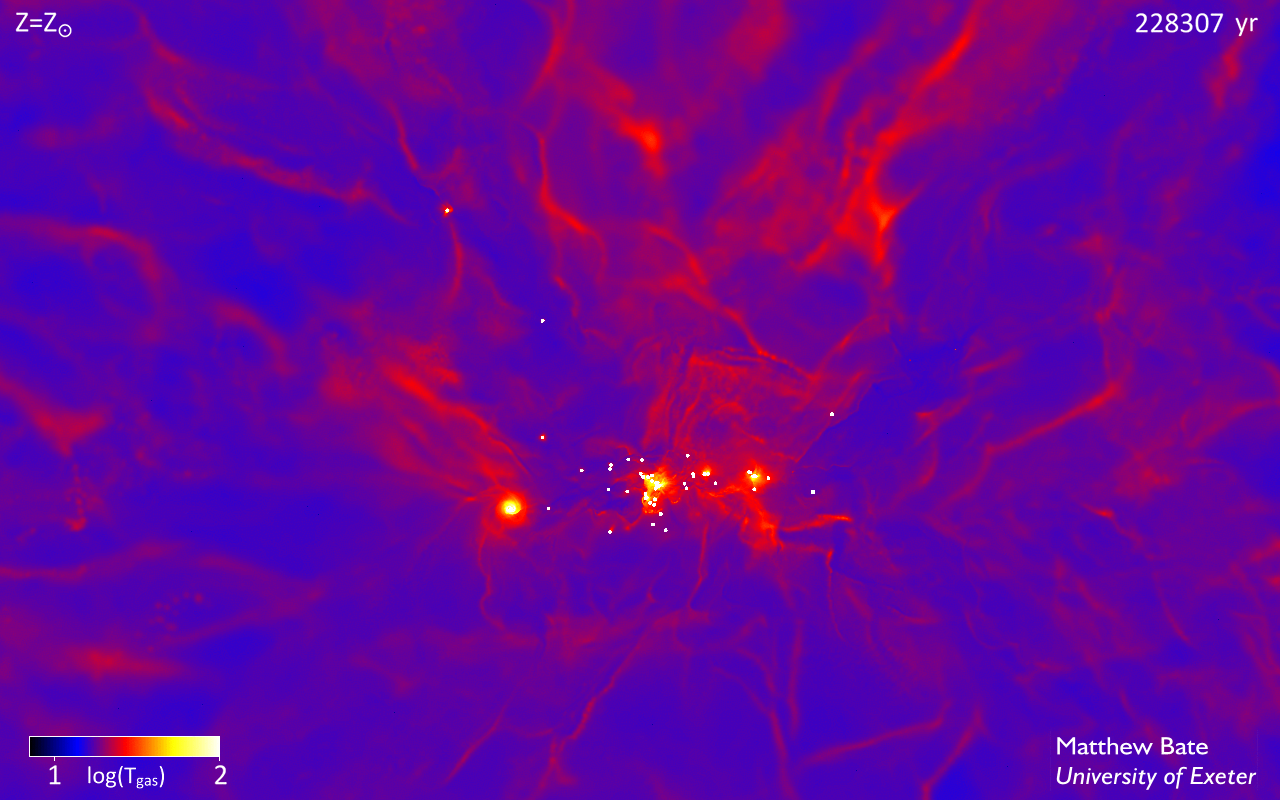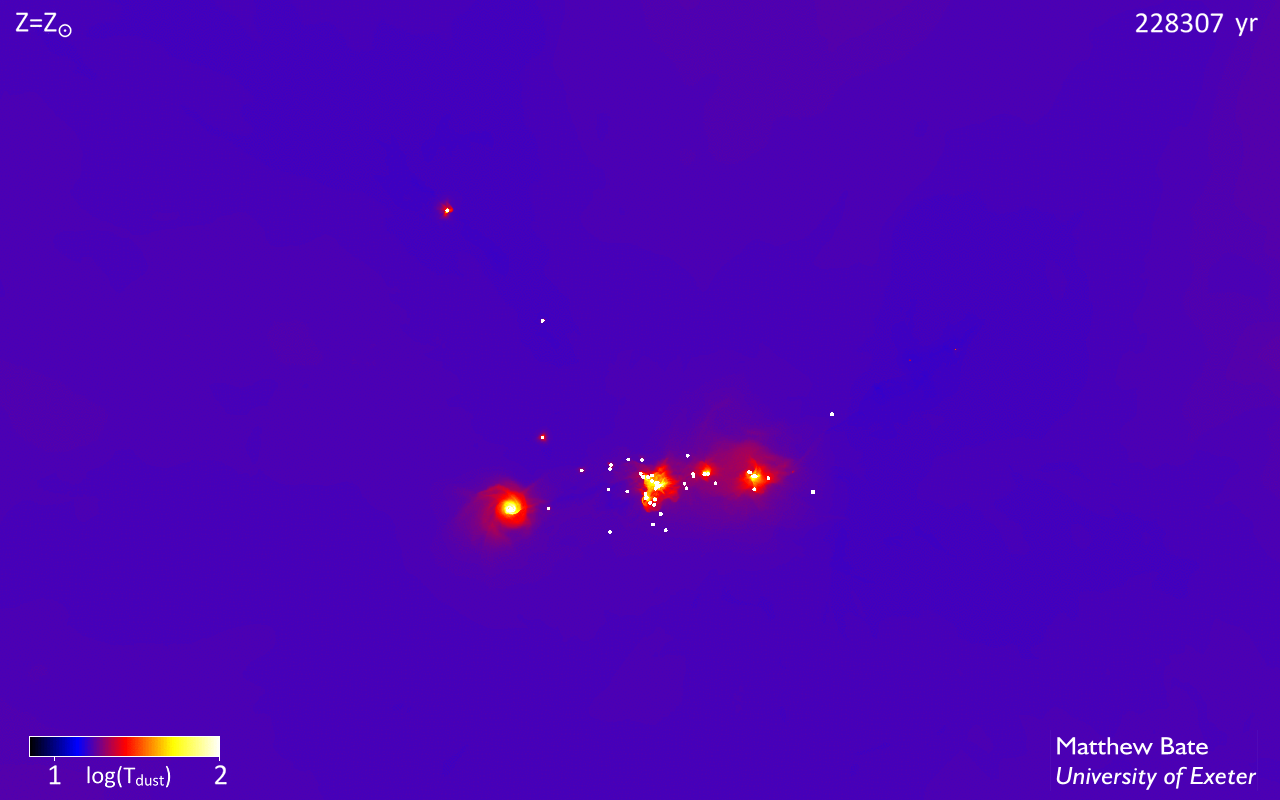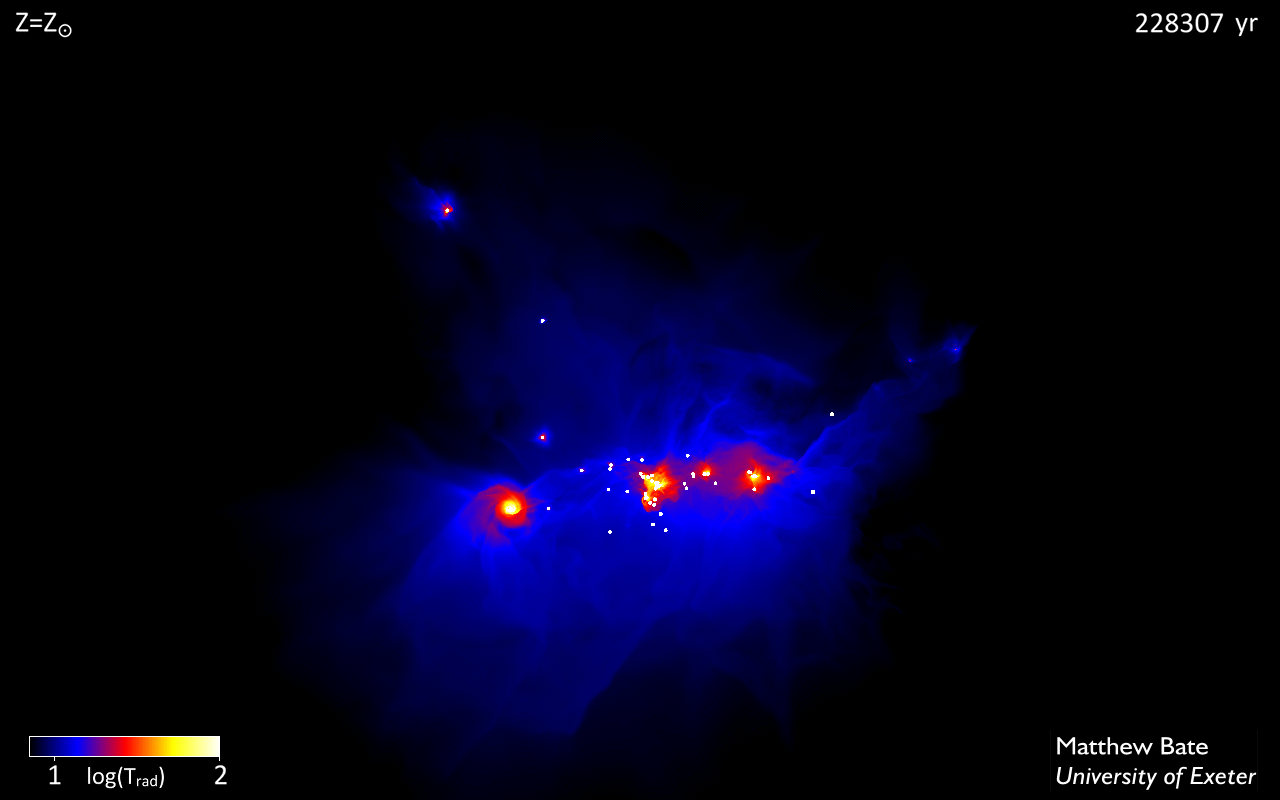The statistical properties of stars at redshift, z=5, compared with the present epochMatthew R. Bate We report the statistical properties of stars and brown dwarfs obtained from three radiation hydrodynamical simulations of star cluster formation with metallicities of 1, 1/10 and 1/100 of the solar value. The star-forming clouds are subjected to cosmic microwave background radiation that is appropriate for star formation at a redshift z=5. The results from the three calculations are compared to each other, and to similar previously published calculations that had levels of background radiation appropriate for present-day (z=0) star formation. Each of the calculations treat dust and gas temperatures separately and include a thermochemical model of the diffuse interstellar medium. We find that whereas the stellar mass distribution is insensitive to the metallicity for present-day star formation, at z=5 the characteristic stellar mass increases with increasing metallicity and the mass distribution has a deficit of brown dwarfs and low-mass stars at solar metallicity compared to the Galactic initial mass function. We also find that the multiplicity of M-dwarfs decreases with increasing metallicity at z=5. These effects are a result of metal-rich gas being unable to cool to as low temperatures at z=5 compared to at z=0 due to the hotter cosmic microwave background radiation, which inhibits fragmentation at high densities. Refereed Scientific Papers
"The statistical properties of stars at redshift, z=5, compared with the present epoch" AnimationsSimulations & visualisations by Matthew Bate, University of Exeter unless stated otherwise. Copyright: The material on this page is the property of Matthew Bate. Movies and images are released under a Creative Commons Attribution-Noncommercial-Share Alike 3.0 License.
For each of the three calculations, there are 4 movies. On large scales, few differences are apparent in the column density animations (the structure is smoother in clouds with lower metallicity due to the generally warmer gas), but the temperature movies differ substantially from one another. Click on the images to view the animations (in Quicktime format).
Copyright: The material on this page is the property of Matthew Bate. Movies and images are released under a Creative Commons Attribution-Noncommercial-Share Alike 3.0 License. |

